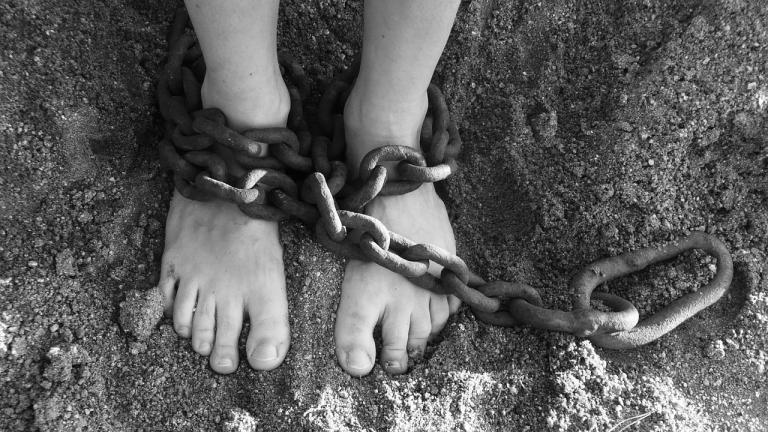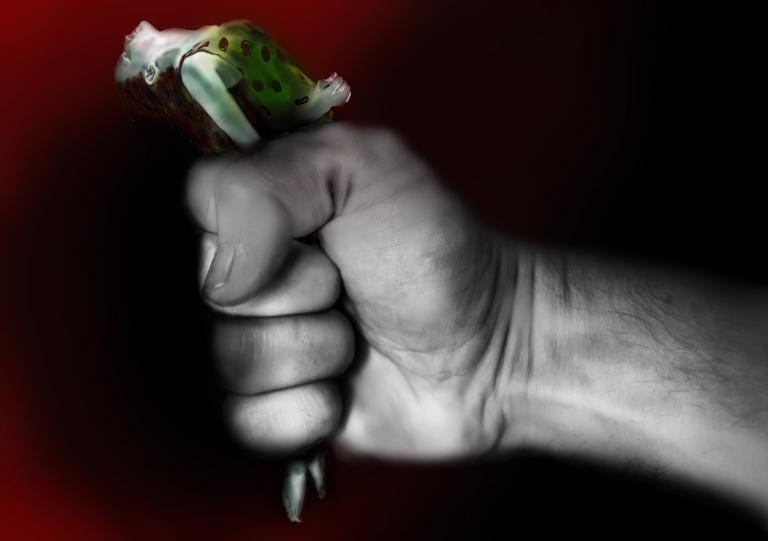It’s nearing Christmas time, and an article from Aleteia is making the rounds again – talking about how giving junk to the poor is kind of self-serving. Instead, the author argues, we should give things that are truly valuable, rather than just the crap that we can’t see a use for ourselves.
“It’s all too easy to make ourselves feel good that we’re “giving to the needy” when really we’re just finding an excuse to get rid of our junk. What we give to others should communicate that they are valuable.”
Okay, so I have seven kids and my income is nowhere near what is considered “sufficient” for that many people by North American standards. I live rural, so we do a lot of stuff to keep costs down – cutting our own wood, keeping chickens, free-ranging ducks, growing veggies, that kind of thing. And I rely heavily on stuff that has been donated to thrift stores.
Seriously, I don’t think that I have bought a piece of clothing retail in like 15 years. Every so often I look at what things cost at Walmart and my jaw drops. I don’t even know how people afford to send their kids to school in clothing every day. It’s crazy.
My clothes, and my kids’ clothes, all come either from grandma or from the second-hand store. The other day, I picked up boots for two kids, two snowsuits, a couple of pairs of pants, some shirts, small plastic containers for sending snacks and sandwiches to school in, a cheap plastic ladybug sprinkler, and some hats and mitts. It cost me about what a cheap jacket would cost me at a low-end retailer.
Some of these things were really nice (my daughter’s boots look like they’ve never actually been worn), but a lot of them are, well, junk. The snack containers, for example. A lot of people I know have cupboards full of these things. I don’t know why, I don’t know where they come from, but I do know that whenever I consider buying them at the grocery store I decide they’re overpriced and that my kids will just have to eat smooshed sandwiches.
Now, thanks to some generous soul who was culling their kitchen cupboard, my kid’s lunch will be safe from the dangers of being transported in a school-bag.
I find all kinds of junk at thrift stores, and I find uses for things that you would look at and think “Is this even worth donating?” Recently, I posted pictures from an elaborate LARP that my husband and I put on for our kids. We made props for this out of some pretty improbable materials: an old leather handbag became a breastplate for a mouse, a decorative straw-hat and cornucopia became a Black Mage hat, porcupine claws glued to a rock became an ancient artifact, clothes that weren’t even worth putting on the thrift-store rack became sinister strawmen. Most of the materials came from the Salvation Army.
People like me, who are regular thrift-store shoppers, don’t mind if things look like they’ve been worn. It is true that we don’t want our kids to look like they’ve just climbed out of the bottom of a barrel. When I’m donating stuff that we’ve grown out of, I always go through it first. If there are holes or stains, it goes in the trash, not the donation box.
But stuff definitely does not need to be in premium condition. It’s actually fairly important for the thrift store shelves to have some stuff on them that is, well, kind of shoddy-looking. Why? Because kids who are shopping in thrift-stores are doing the same kind of comparisons that kids shopping in retail stores are making. They don’t want the ugliest, crummiest thing on the rack. If you have a few pairs of old, ugly boots sitting next to the ones that are obviously used, but still in reasonable condition, it makes the kid feel like they’ve gotten something nice.
It also allows a kid to have some selection. Some kids are really conscious about their clothes looking new, but some kids could not care less. To my youngest son, it’s much more important that his clothes makes him feel like Doctor Who or Spiderman than that they be in mint condition. My seven year old daughter routinely rejects really good quality, like-new clothing because she doesn’t like the colour – but she’ll be happy as a clam with stuff that’s kind of shabby if it’s the perfect hue.
The line that I usually see quoted is “don’t donate it unless it’s something that you would want yourself.” There are two problems with this. First, the wealthiest people (who have the nicest stuff to donate), will also tend to have the highest standards for what degree of wear and tear is acceptable. I lived for a year with a girl who was upper-middle class, and I remember one day she took my daughter and bought her a pair of new rain-boots because she couldn’t imagine that anyone would wear worn shoes. Half the stuff she threw out was, to my eyes, in perfect condition.
Second, it assumes that poor people feel the same way about used goods that wealthier people do. This is something that I see a lot: people who get all sentimental about how important it is for a child to open their toys on Christmas and find something that’s in it’s original packaging. Or people who think that it must somehow make the poor feel subhuman to eat food with a torn label or a dinged box.
This is largely projection. It’s the result of middle-class people imagining how they would feel if they suffered the shame of dropping a rung or two on the class ladder. Or, in some cases, it’s middle-class people who have dropped a couple of rungs lamenting about the shame that they do in fact feel. But if you’ve been shopping at thrift stores and liquidators your entire life, it never occurs to you that stuff should come in pristine, brand-name packaging with tags on.
Ultimately, I gotta be honest here, when I get used stuff it’s not about me feeling like I’m loved and valued by the people who donated it. It’s about me being able to obtain the stuff that I actually need to keep my house running. Yes, it’s wonderful and it makes me feel fuzzy inside if someone gives me something that is actually really nice. It definitely humanizes the poor when folks donate luxury items to food banks and community charities. But this isn’t an either/or thing. You can both buy a brand-new Batman toy for the Christmas toy-drive, and still drop off your old sheet-set and that sewing machine you inherited from your mother-in-law at the local Salvation Army.
We need them both.
Image credit: pixabay
Stay in touch! Like Catholic Authenticity on Facebook:













